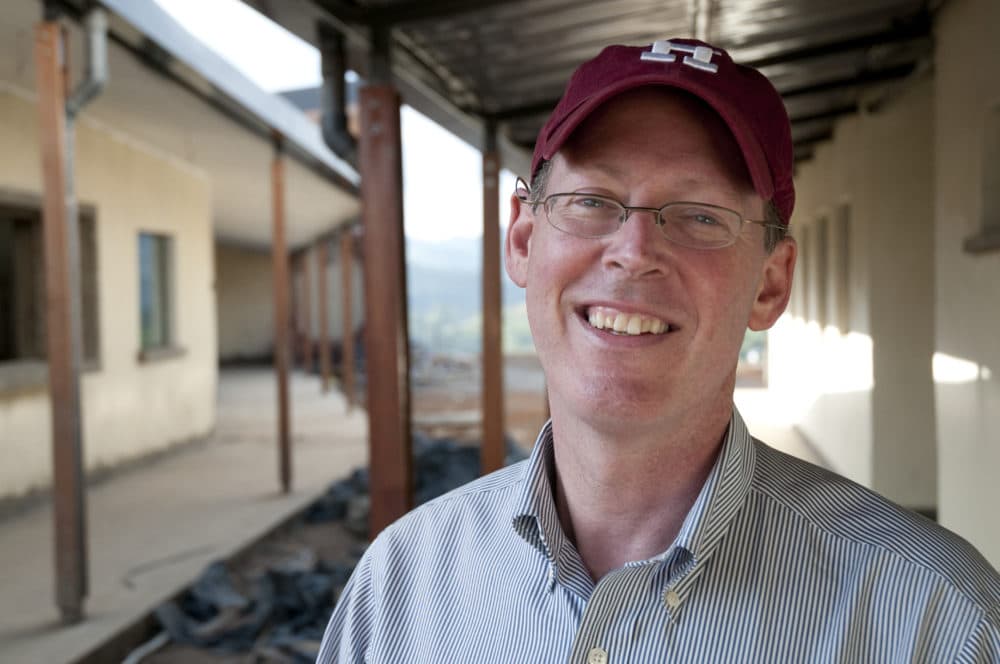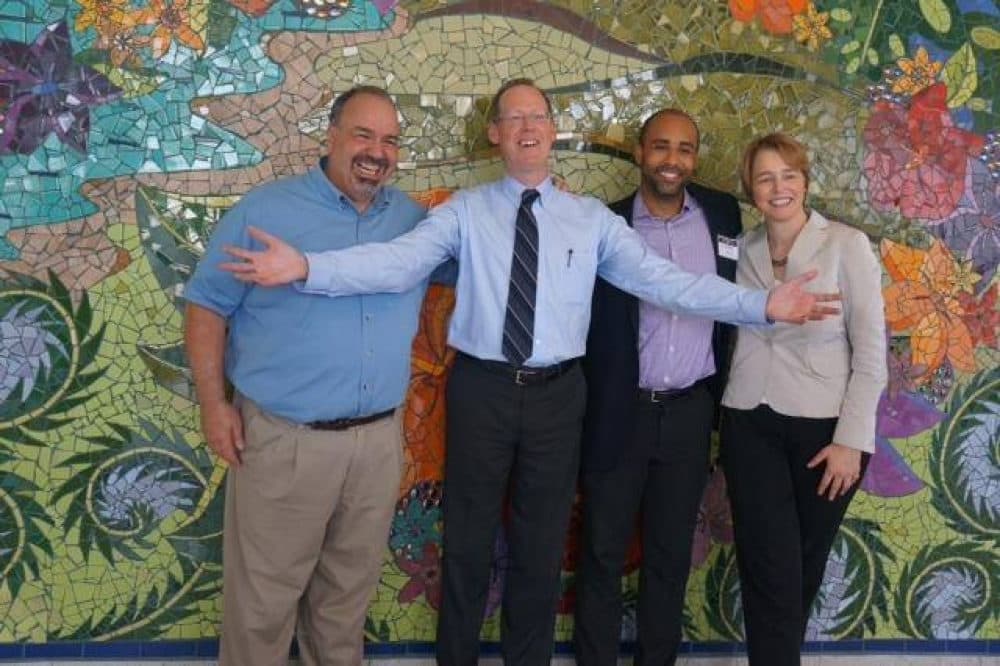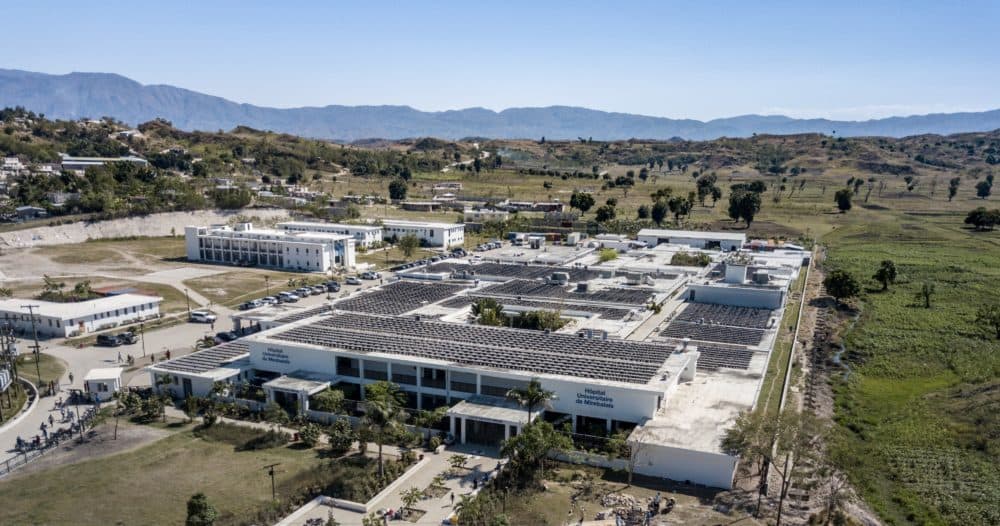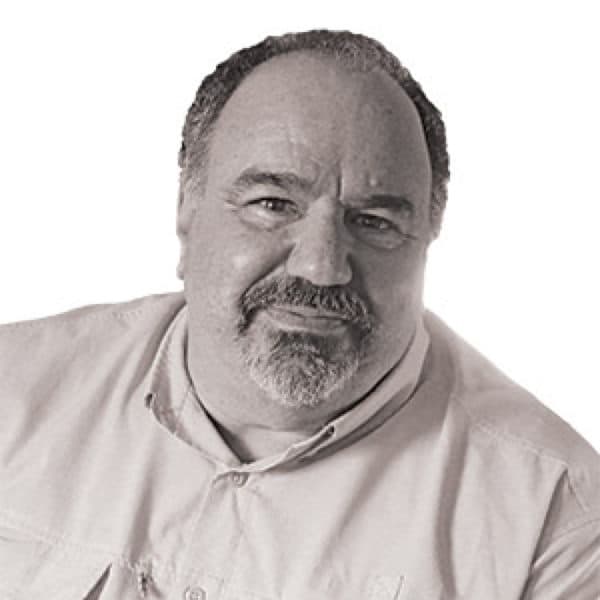Advertisement
Commentary
What I want people to know about Paul Farmer

As I try to shake off my shock, sadness, and the unavoidable feelings of being left adrift after hearing Monday about the death of Dr. Paul Farmer, I have been trying to think of not only his legacy, but also what I want people to know and appreciate about Paul that is not part of the conventional discourse for such a celebrated and public figure.
Paul, like most accomplished and brilliant people, was complicated. And like all of us, he had his truly wonderful moments and also more challenging times. His public legacy and impact on advancing health care for many of the world’s most impoverished people are well documented and irrefutable. He was a brilliant teacher, inspiring many thousands of people from clinicians, to politicians, to people like myself, to join him in his mission to bring dignified, accessible, and quality health care to the most marginalized communities. He was a prolific writer, strategist, fundraiser, and at his core, a doctor who treated patients, whenever he had the opportunity. Paul did so much, and his impact through all these different mediums was so vast, that it is hard to distill and define what his true genius was.
My relationship with Paul first began in 2008 as a donor to Partners in Health (PIH) and then rapidly evolved in early 2009 when I went with him on a short trip to Haiti to help with some PIH initiatives in Haiti’s Central Plateau. Later that year, one of Paul’s closest protégés, Dr. David Walton, reached out to me to support in the planning and building of a 100-bed community hospital in the small city of Mirebalais, Haiti. We were about to start construction when Haiti was devasted by an earthquake in January 2010. In the week following the earthquake, as David and I worked on supporting medical relief efforts at the general hospital, what had been Haiti’s major teaching hospital in Port au Prince, I experienced for the first time Paul’s true superpower and unique genius — his ability to be audaciously and unyieldingly unreasonable.
I experienced for the first time Paul’s true superpower and unique genius — his ability to be audaciously and unyieldingly unreasonable.
Paul rushed to Haiti a few days after the earthquake, despite having just had knee surgery after being struck by a car. Paul joined us at the chaotic hospital, and then later slept on the floor of a supporter’s house that was still intact. That evening, as we started to discuss the disastrous state of Haiti’s post-earthquake health system and how PIH could help rebuild, we broached the idea of redesigning our 100-bed community hospital in Mirebalais, to be a larger referral hospital. The public health system had lost 70% of its buildings and beds and 20% of its clinical staff. The Ministry of Health building was a pile of rubble with much of the staff laying underneath it. Paul, as was his way, immediately dismissed our thoughts as to how we might add additional beds or clinical services as too timid and narrow in focus. Instead, he began to talk about building a new national teaching hospital that would not only be 400% larger than our current plan, but would be beautiful, dignified and include state-of-the-art equipment and a robust teaching component. He then took it a giant step further and said that we would build the hospital in six months or less.

From my vantage point, in post-earthquake Port-au-Prince surrounded by total chaos and devastation, no heavy construction equipment available, and a traumatized population with decimated central government, this entire venture seemed to be ludicrous and fueled by hubris. Paul was unswayed and adamant in the face of my long list of logical obstacles. He simply felt David and I could figure it out and chastised me for thinking incrementally. Over the course of the next few days, Paul met with the Haitian government, and a rudimentary plan was agreed upon. Paul’s directive to us was to go design and build the biggest and best hospital possible, as quickly as we could. He told us to ignore budgets, he would find the funding. He believed we could build a first-class, hurricane- and earthquake-proof hospital in rural Haiti with an unskilled workforce. And, we did.
The hospital was not finished in six months, but Paul forgave us. We finished major construction of the 320-bed teaching hospital in the Fall of 2012, before any of the other five major hospital projects approved after the earthquake had started. This was a point of both pride and sadness for Paul. It was eye-opening for me and David. It was also the main impetus to co-found Build Health International (BHI). The Hôpital Universitaire de Mirebalais (HUM) opened in April of 2013 with state-of-the-art equipment, six operating rooms, and the country’s first CT scan in the public sector. Paul was happy but not satisfied. David and I made many mistakes and miscalculations in the design and planning. Many we were able to correct as we saw them. Others we were not. We designed the hospital for 600 outpatients and emergency room patients per day. By the second year, we were averaging 1500+ patients per day. Twelve years on, BHI and PIH are still expanding the hospital.

This hospital would never have been developed at this scale without Paul’s unreasonable and audacious expectations. When I look back on the trials and tribulations in Haiti since 2010 and try to envision the impact of not having HUM, it is incomprehensible. By pushing such an audacious vision, HUM has had a tremendous impact on the health care and economic system. It has kept clinicians in Haiti and the public system. It has trained thousands of specialists. It has treated millions of patients and saved countless lives.
Dr. Paul Farmer’s unreasonable vision about what was possible, and what could be accomplished has led to great advancements in the global health community, time and time again. From proving against conventional wisdom, and the scientific community, that multidrug-resistant tuberculosis could be treated successfully through a low-cost community health model, a program in Haiti to treat HIV/AIDS patients, building a hospital, cancer center, and then medical school in rural Rwanda, to leading PIH into an emergency Ebola response and then permanent programs in West Africa. There are scores of examples where Paul pushed organizations and individuals to do projects and take on challenges that seemed at the time to not make sense or be possible and they lead to catalytic change.
There will be more great physicians and scholars in global health. There will be other teachers and visionaries. There will be leaders who build extraordinary organizations. But there will never be another Paul Farmer.
